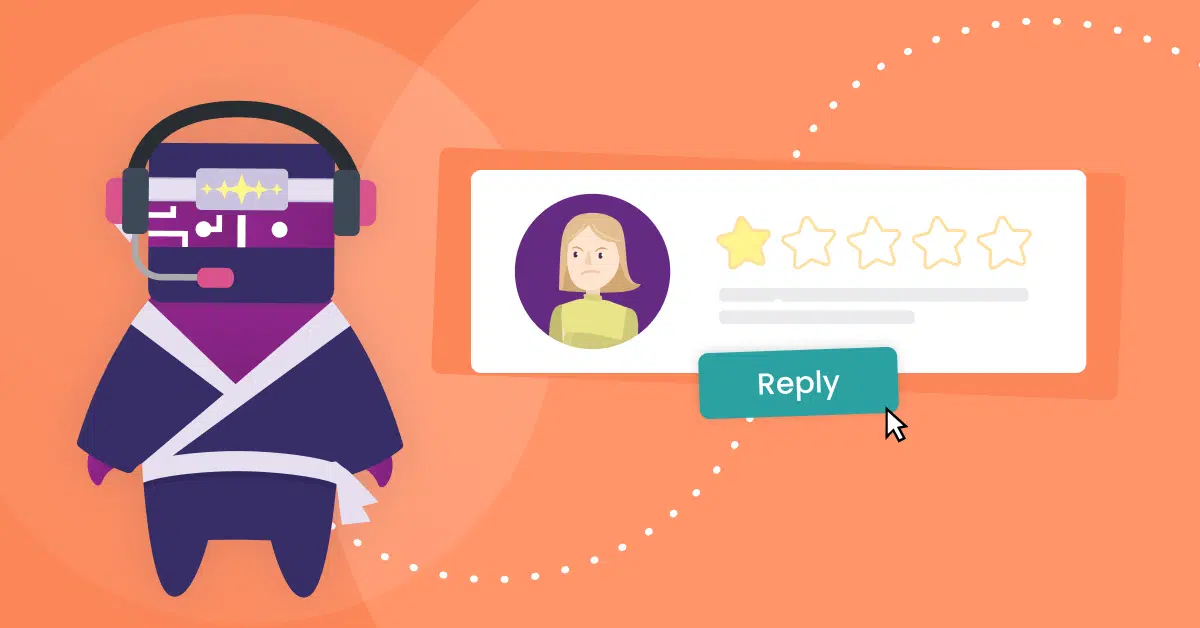To battle customer negative feedback and harness dissatisfaction for good you need to rethink how you react to negative feedback. Because frankly, unhappy customers feel like they’ve been swept under the rug – and they’re not entirely wrong.
Negative feedback is a part of life and successful business owners act on that fact. The most resilient enterprises will have a comprehensive strategy, not only on how to deal with negative feedback but to harness valuable insights from their dissatisfied customers, too.
Ever wonder how to turn negative reviews into your business’s most valuable resource?
Read on to learn how negative customer feedback can actually improve your CSAT!
What is negative customer feedback?
This is a simple but unpleasant truth. When a business provides a service to the public, the public has a right to share their opinion. No matter how harsh it may be.
For businesses, especially those with service centers, negative feedback can be targeted at any aspect of your operations. Your employees, the product, your website, the service channels you provide, and perhaps even the ones you don’t – you name it!
Every customer will have their own reaction to the products and services you sell. Whether you have 10 customers or 10,000, one of them will experience negative customer service. And when that happens, you’re bound to hear about it.
The bottom line is, there is no hiding from customer criticism.
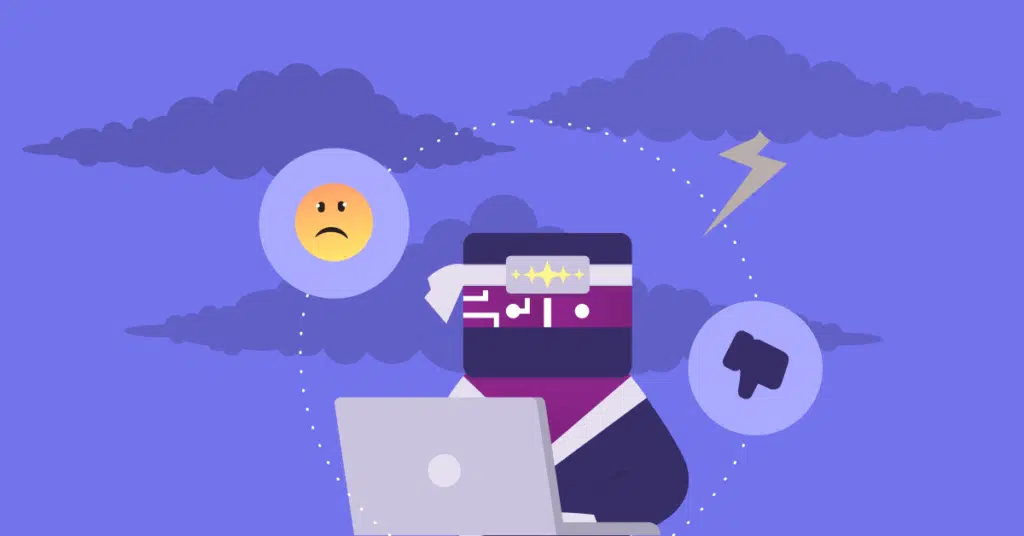
Knowing how to deal with customer feedback is an art. People leave negative feedback because they feel strongly about their opinions and want to share them. They want to be heard and to have their complaints taken seriously. So why shouldn’t we give them what they want and listen to their concerns?
It’s incredibly important to understand how to deal with negative clients. We know that all feedback can’t be taken to heart but whether the complaint seems unreasonable or not, it’s important to learn from every customer interaction you can.
Customer service negative feedback, in particular, is ripe with valuable information. Collecting this information and understanding the trends in customer complaints can steer your team toward solutions that can:
- Clear bottlenecks in your shipping process
- Fix defects in your products and services
- Draw customers in with empathic and insightful agent responses
- Guarantee customer satisfaction with new releases and promotions
- Increase the overall CSAT
Long story short, embracing negative feedback as a key business insight can improve your products, agent performance, and ultimately increase your bottom line.
Keeping an eye on negative customer feedback
Before we get into how to use negative customer feedback to improve your business, let’s talk about which data to collect if you want to keep an eye out for negative feedback.
Negative Response Rate
Measuring Negative Response Rate (NRR) can give you clarity about the ratio of negative customer reactions to positive ones. It measures the accumulation of negative reviews about your business, service, and products.
Here’s the formula for calculating NRR.
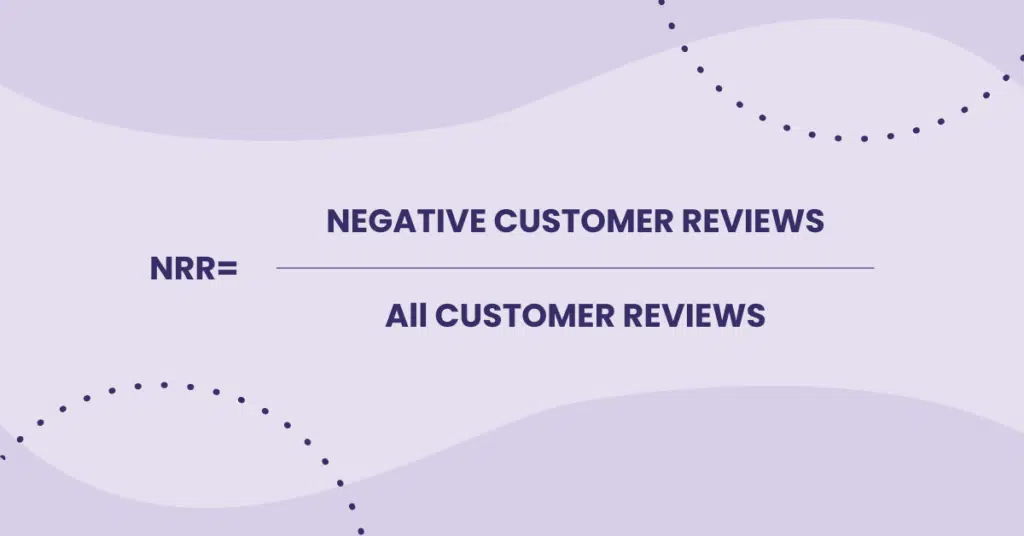
Your customer review data is compiled as customers take action to provide feedback after interacting with an agent or business representative. Often this data comes from customer experience surveys, open-end “feedback” requests, or directly communicated in the service channel.
Net Promoter Score
This metric is a strong indicator of how your customers really feel about your service or product.
The data for a company’s NPS comes from a simple survey designed to determine customer satisfaction. Customers most frequently receive the NPS survey after customer success – or in other words, after they’ve purchased and received their desired product.
You’re likely to have seen this survey before, this is what it looks like.
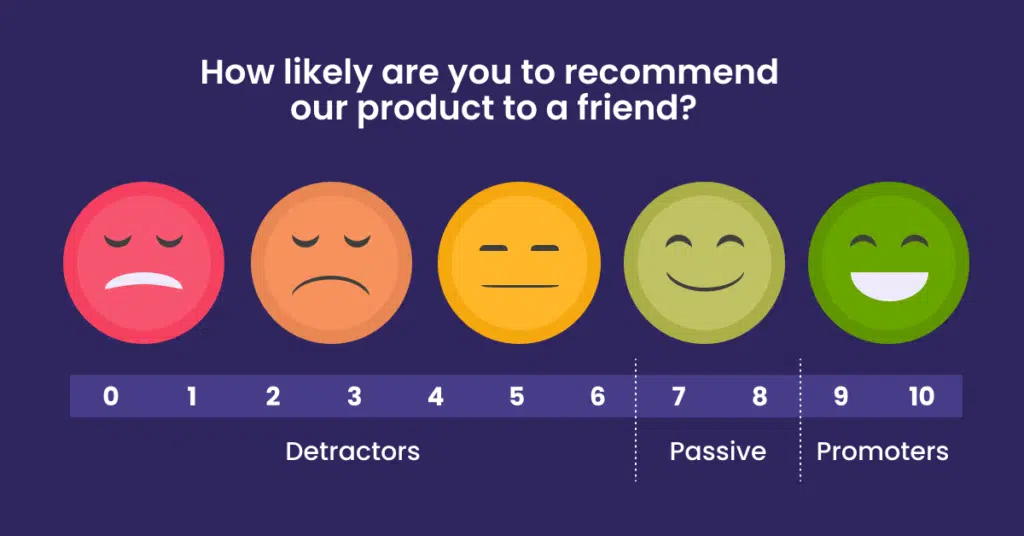
Calculating your NPS measures how “recommendable” your customers find the products you sell. Managers and QA specialists can calculate this by subtracting the % of promoters to the percentage of detractors:
Pay attention to those detractors, though. They are the customers we want to keep an eye out for. In fact, having a high NPS is the ideal outcome but that’s not exactly what makes this metric powerful.
Businesses that use NPS and other survey data to their greatest potential are focused on “closing the loop.” Meaning, this data can help team leads know when it becomes most beneficial to deploy agents to de-escalate the situation and complete the detractor’s customer journey. Be it to send an expert to solve their unique problem or acknowledge their dissatisfaction.
The cost of ignoring negative customer feedback
Agents are often subjected to increasingly impatient, frustrated, and angry customers. We are living through difficult times and, unfortunately, many customer service professionals become the target of misplaced anger.
But when you’re in customer service, understanding the motivation behind customer dissatisfaction can be extremely profitable. Lest we forget, customer service is not only about quickly responding to customers. Customer service is an action businesses take to build consumer trust and brand loyalty.
Customers want businesses to listen to them. They look at your products as something that can add value to their lives and want businesses to treat their feedback as an essential part of their product design. Despite the amount of personal data collected by major companies, when a new or updated product is released – customers cringe at the issues left unaddressed.
Unfortunately, customers just don’t have much confidence that businesses actually care what they think. Zippia reports that more than half of customers surveyed – 53% – don’t believe companies take any action based on the feedback they provide.
And it only gets more disappointing from here.
Forrester Consulting was commissioned to conduct research investigating the gap between customer expectations and brand perception. In their publication, Forrester found that businesses are consistently incorrect about their customers.
According to the survey, respondents think customers are willing to take a lot of grief to receive the products they want. Here’s what the industry is getting wrong:
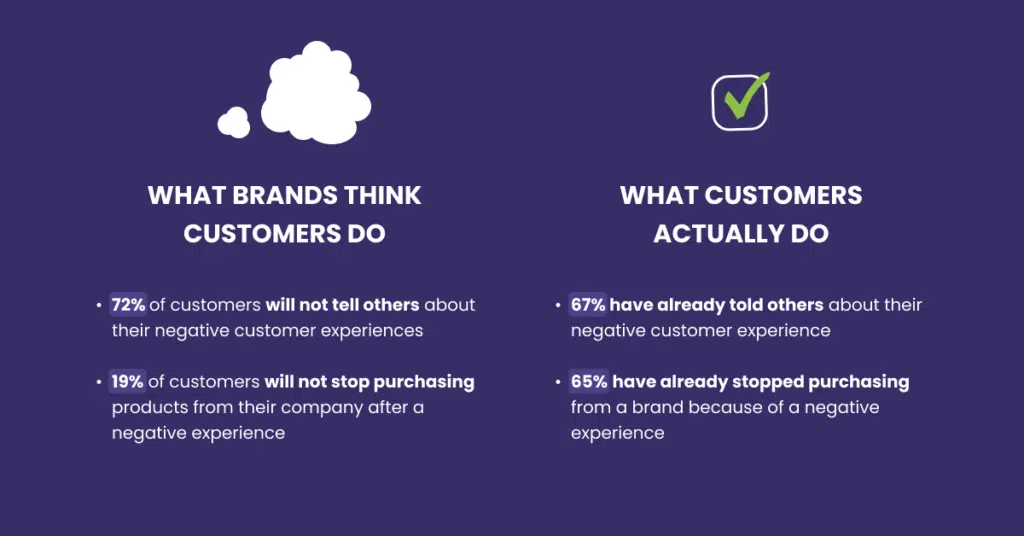
For a closer look at these shockingly consistent misconceptions, check out the graph below.
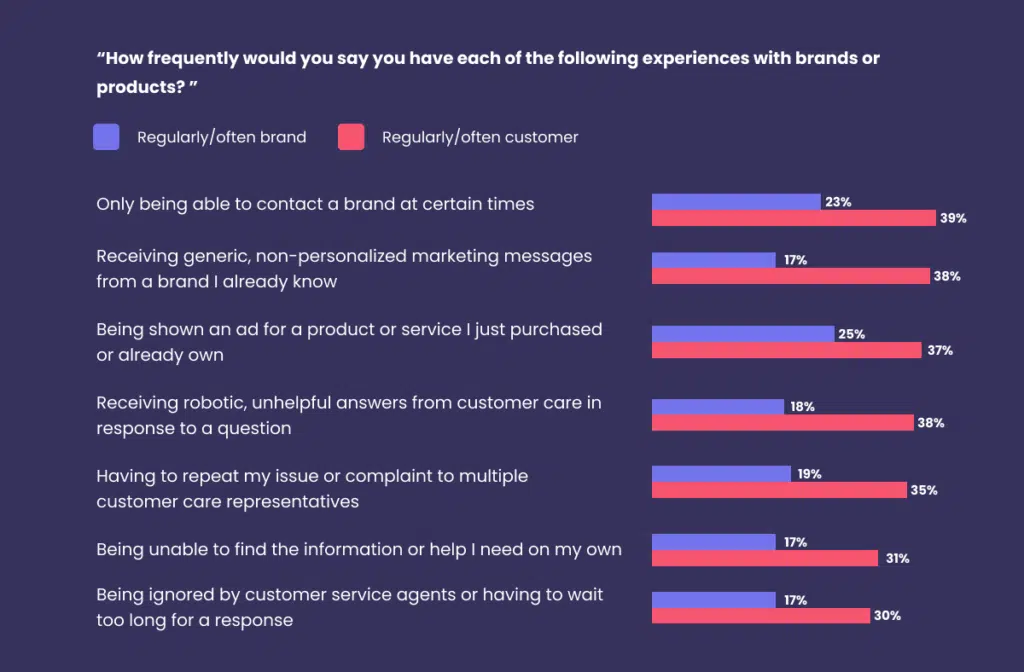
The industry is overflowing with information about customer motivation. If businesses don’t get smart about negative feedback they’ll keep disappointing customers for the same reasons.
So, what can you do here? Let’s learn how to handle negative feedback from customers.
How to use negative feedback to improve business?
Calculating metrics and reading negative reviews is one thing but knowing how to utilize that information is another. While your competition is sitting idly by, filing their negative customer reviews away never to be used again, you’ll be mining this resource like it’s gold.
There’s a gap in the market – if you want to be the first to close that divide, start by implementing the following strategies.
Collect, categorize, and act on negative feedback

Negative interactions happen every day. Don’t let this opportunity go to waste. As team leads and QA specialists review agents’ tickets, they can identify which departments would benefit most from the information provided. This process is a key driver for proper Learning and Development in customer service.
And for those in customer service, this kind of data falls into two categories:
- Actionable: When negative feedback is linked to malfunctions outside of the agent’s control
- Non-actionable: When negative feedback is directly related to the agent’s performance or knowledge base.
Actionable data can be sent to departments for later review. While non-actionable data, despite its name, can be marked in your performance management software for the agent to review.
The best practice is for team leads to complete their rating and leave feedback within 24 hours. If you’re struggling to meet that goal, you’re not the only one. You can find some advice in this blog about managing service quality assurance in large teams.
Using negative reviews can be good for your agents’ motivation as well. There’s no denying the cost of call center burnout and the role of negative customer feedback in this trend. Exposing your agents to negative feedback in a safe, training environment can support them in feeling empowered to face unhappy customers. But with regular feedback and an open, not accusatory, style of communication from team leads in coaching sessions, agents can learn how to handle negative feedback with a growth mindset.
The right software can really be your friend in this. When you see consistent issues with an agent’s service quality, having software that supports a coaching culture will go a long way.
Scheduling regular coaching sessions to review an agent’s negative reviews can lay the foundation for open discussion about expectations, agent success, and where improvement still needs to be made.
Here’s a tip that may benefit team leads in coaching sessions: Leverage what your customer service data is telling you. Agents may feel as though they’re the only ones messing up. This can negatively impact their motivation to learn. Empower your agents by sharing the major trends in negative reviews. This will assure them that they aren’t alone.
Build collaborative solutions around negative feedback
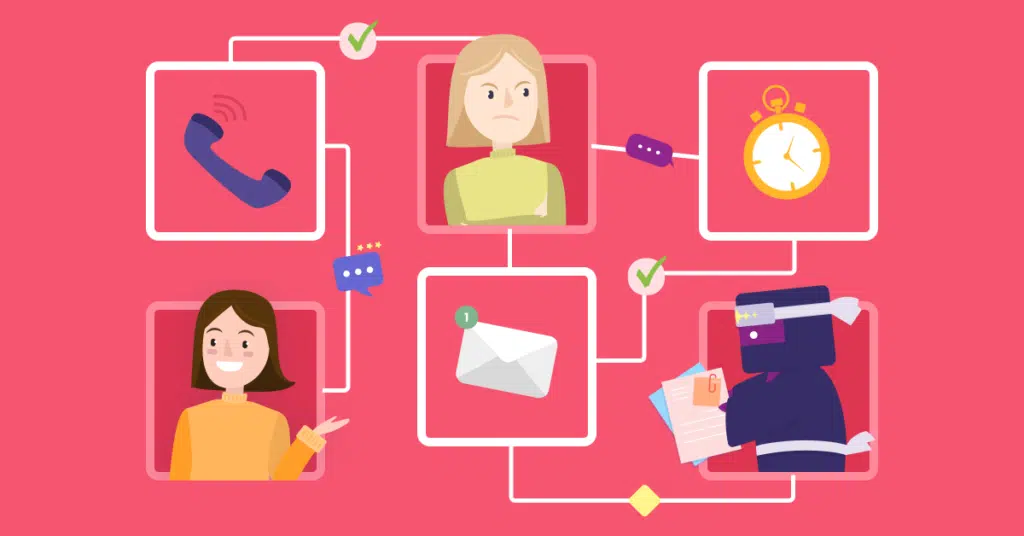
A belief strongly held by customers is that service teams are completely isolated from other departments working under the same roof. And they’re not wrong. Forrester identified a group of challenges that hinder effective customer engagement. Indeed, misaligned goals, lack of collaboration, and data silos were among the obstacles identified.
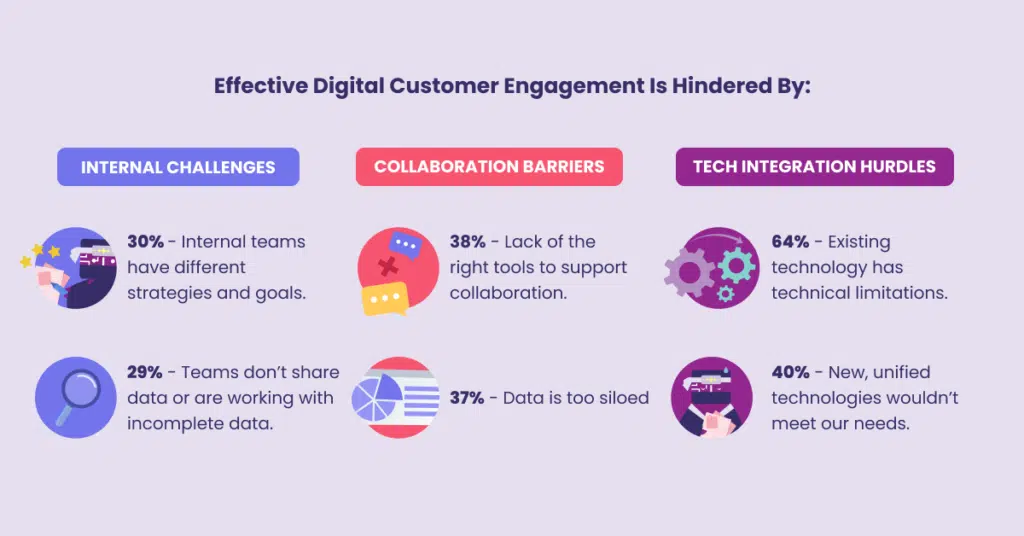
This is a shame, considering 77% of customers want a brand’s internal teams to communicate.
Customers believe if this were the case, they wouldn’t have to constantly repeat themselves during their service experience. If our promise to customers is to deliver satisfactory service that meets their needs why aren’t we listening? It’s time to use negative customer feedback to improve your business, it’s time to break these barriers and start working together.
Establish regular sessions between all your departments to pull insights based on the trends identified in your negative feedback data. Holding these meetings on a monthly basis is recommended if you want to prioritize sustainable growth across your business.
Here, managers from customer service, marketing, and product design can compare their progress to the outcomes customers report. This is where the actionable data we discussed in the last section will help you learn how to deal with negative feedback.
Companies need to start organizing around negative customer feedback as a driver for improvements to product design, customer engagement, and profit.
Say the most significant trend in your negative review data was a result of the deployment of a new update. At the end of your monthly meeting, department heads will leave with a list of actionable outcomes that their customers want to see.
Customer service is the heart of a company. When a problem with a product arises, customer service hears every complaint. When a product is out of stock, customers rush to the live chat. If a social media post advertised an expired coupon code, you can expect a DM within minutes. Interdepartmental collaboration can increase customer satisfaction and empower agents to speak with authority about the processes in your company.
And the list can go on. Just imagine the positive impact this kind of collaboration can make. When customers are so convinced that their complaints go unheard, listening and making them aware that you are taking action to respond is incredibly valuable. If business is about giving the customers what they want, why shouldn’t we work together to make that happen?
Use social data to listen and learn, not just serve
In 2022, PwC released a series of publications on customer intelligence.
In the “Future of CX (Customer Experience)” edition, PwC reports that 43% of customers in the United States alone would not give companies permission to access their data to allow for more personal, customized experiences. However, there was one outlier among the categorical questions
63% of customers say that they would only be open to sharing their personal data if they truly valued the products or services. PwC marks a strong correlation between data permissions and customer trust. That’s what makes social media such a powerful opportunity for customer care.
Having conversations with customer service representatives on social media is ranked first among the most valuable branded interactions online! Forrester reports that 79% of customers consider social media service channels a valuable experience just followed by engaging with a brand’s online community at 75% and messaging a brand through the company’s mobile app.
More often than ever before, people are using social media to build a community around common interests. 75% of customers place a large amount of value on companies that align with their personal values. But when people are that invested in a product, the chance of disappointing these dedicated consumers is high.
Studies from Zippia show that only 4% of customers complain directly to the company itself.
No, customers aren’t rushing to their desks to write strongly worded letters anymore. The data shows that negative feedback circulates in the customer’s personal circles.
Every dissatisfied customer is likely to tell an average of 16 of their friends about their negative experience. Most likely because, as we discussed before, they are not confident that companies will actually do something with their feedback. It is clear, however, that customers do trust each other, actively seeking the advice of fellow enthusiasts and external sources for information.
McKinsey found that 75% of US customers will surf the web for community-driven information about your product. They look for insights across online platforms, moving between social media, review sites, and your company’s product pages to see how your product performs and how others feel about its features.
With over 60% of direct messaging activities dedicated to customer care and community engagement, brands have direct access to their customers.
Of the 500 US-based companies surveyed by Sprout Social, we see that respondents are leveraging social data for customer service at a 44% rate. Just above this is product development at 48% of their usage of social data.
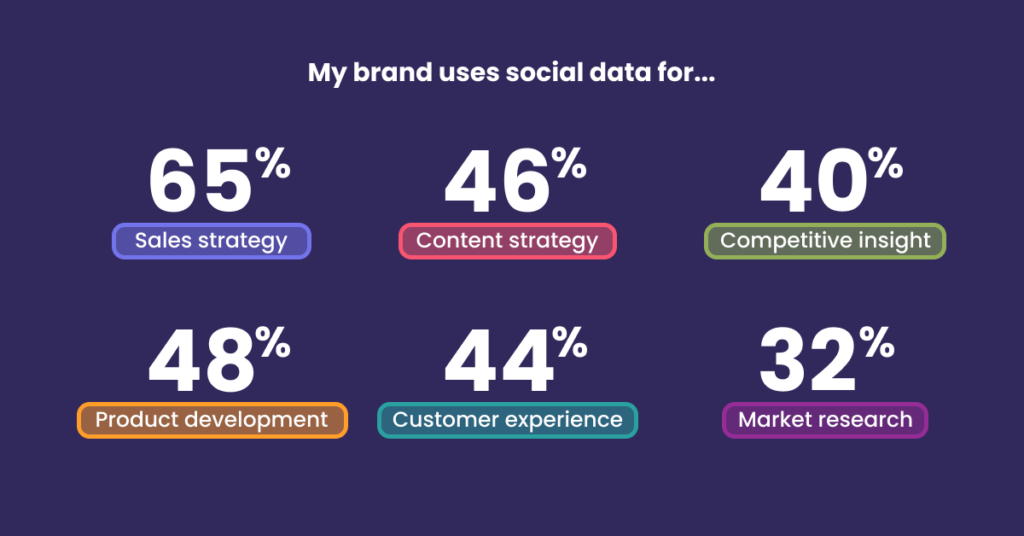
By monitoring social data businesses can identify trends that may be hidden otherwise. Leveraging these direct communications channels for data collection can support your business across the board! They can even add to your monthly review sessions.
The closer you get in touch with your online communities the more trust your customers will have in your ability to actively listen to their needs. Customer service presents the most natural opportunity to engage with the customer. So a business can use social data for customer service in the following ways:
- Answering questions about business
- Welcoming new followers to your social media pages
- Privately responding to negative comments
- Distributing customer experience surveys
- Notifying customers about disruptions in service
- Raising awareness for flash sales and updates
- Increasing product literacy
By breaking customers’ negative expectations about how you use feedback and data, companies can impress customers and improve business outcomes, particularly their profit.
Qualtrics reports that responding to negative comments not only builds trust and loyalty but improves sales as well. Resolved negative Tweets are 3x more profitable compared to the profits driven by responding to positive comments.
Customers who receive a response to their issues can make people spend 3% to 20% more on your products. Quick responses, 4 minutes to be exact, can also make a difference. It is likely that, with swift service, customers can be encouraged to spend $17.18 more on your products.
Concluding thoughts
So you see, negative feedback should actually delight businesses. It is an indicator that their customers pay attention to their products and care enough to give valuable negative feedback.
This article provides information on how to react to negative feedback in a way that improves business. We’ve seen how leveraging these bad reviews can increase profit and product quality through interdepartmental collaboration and customer care.
Now it’s your turn to implement these skills! Don’t forget to engage with our own channels to let us know how you’ve improved business with negative customer feedback.
And if you are looking for a tech solution that can help you on the way, book a demo with Kaizo!
